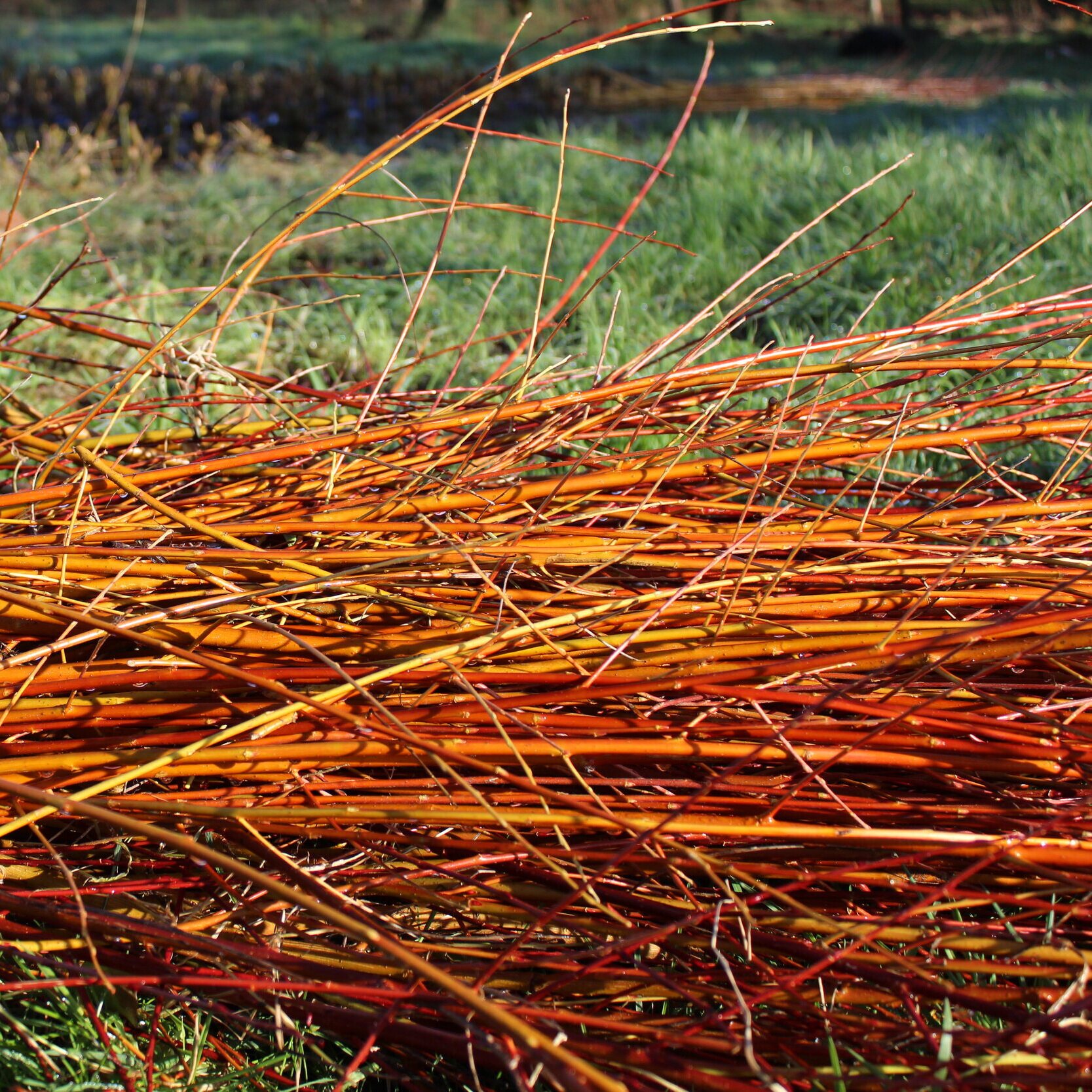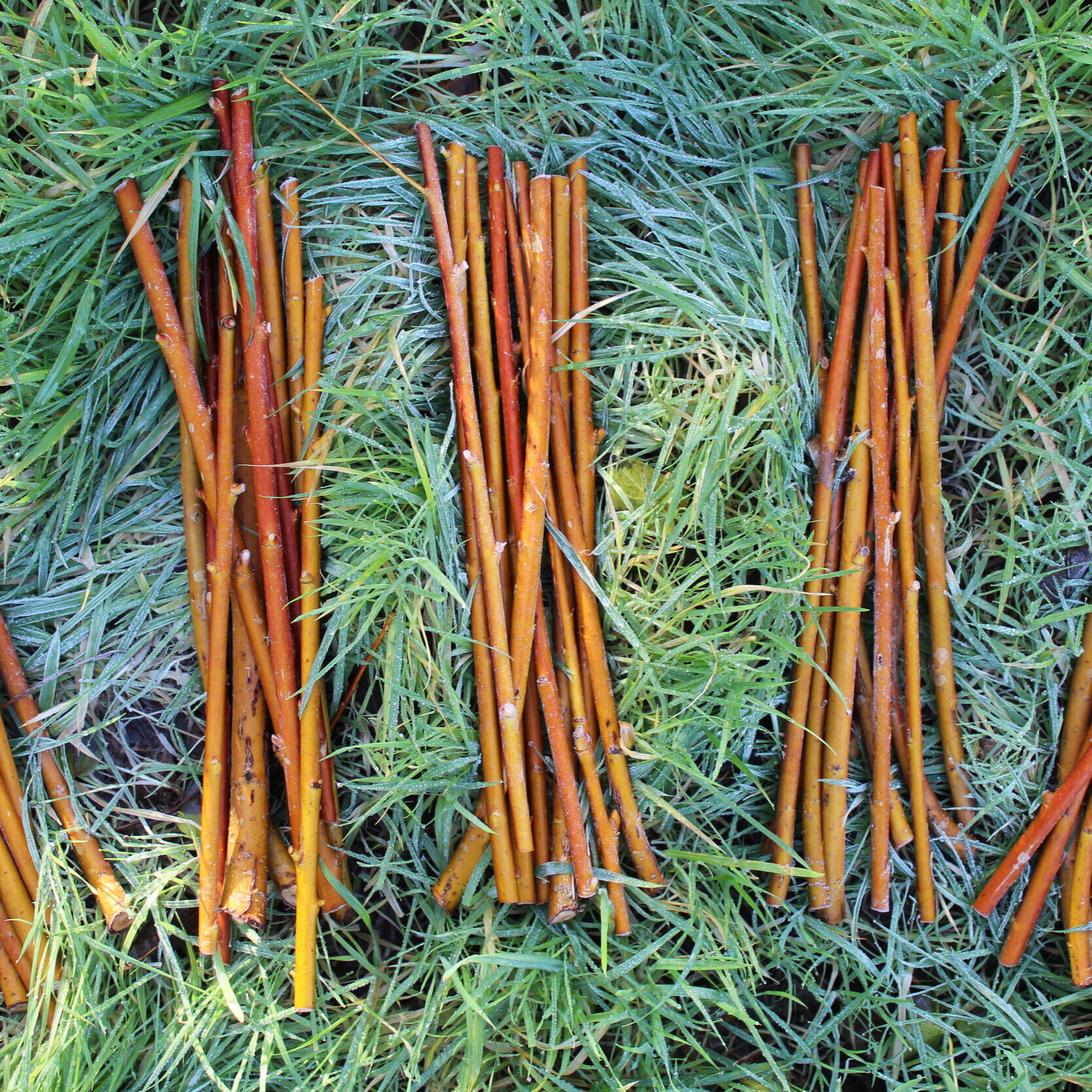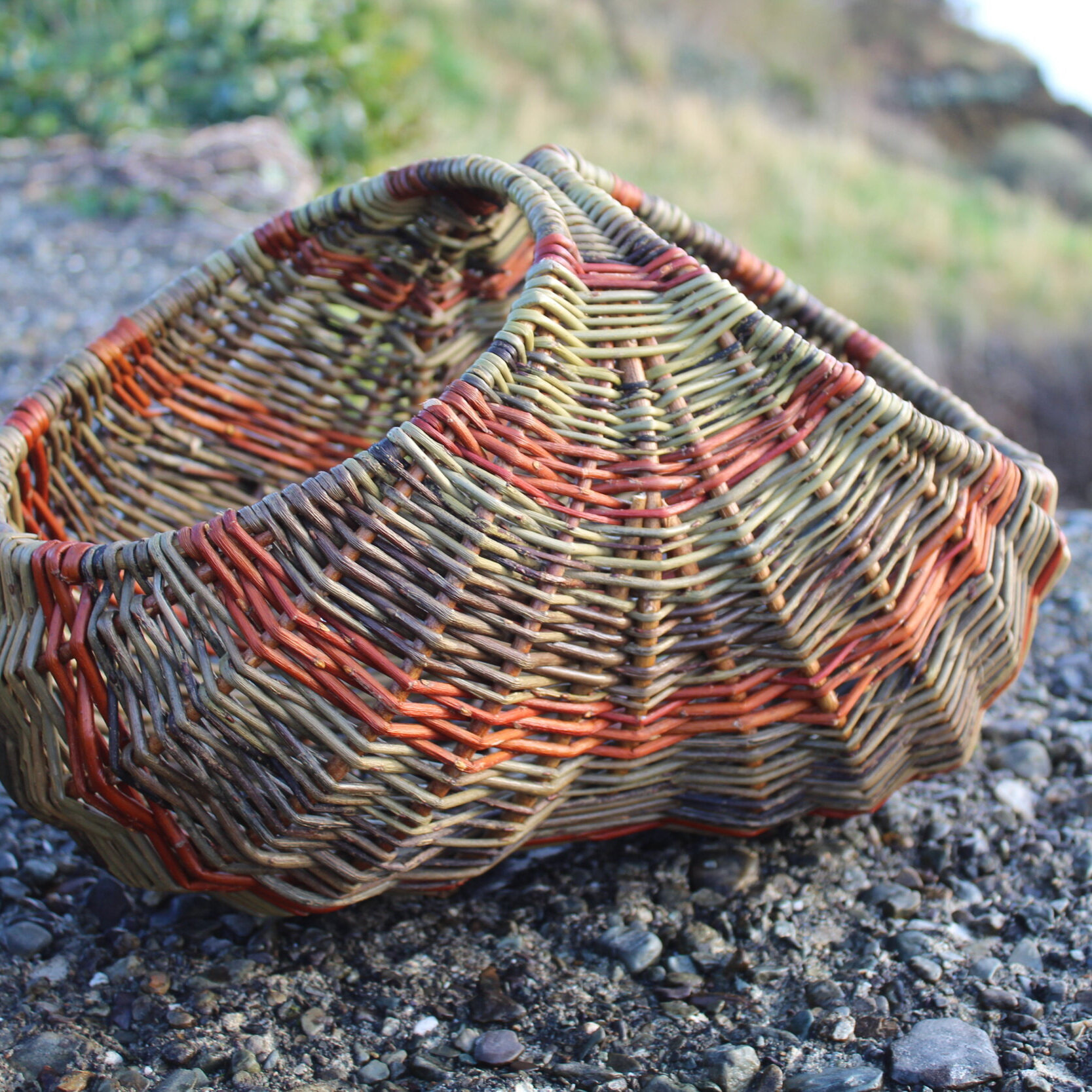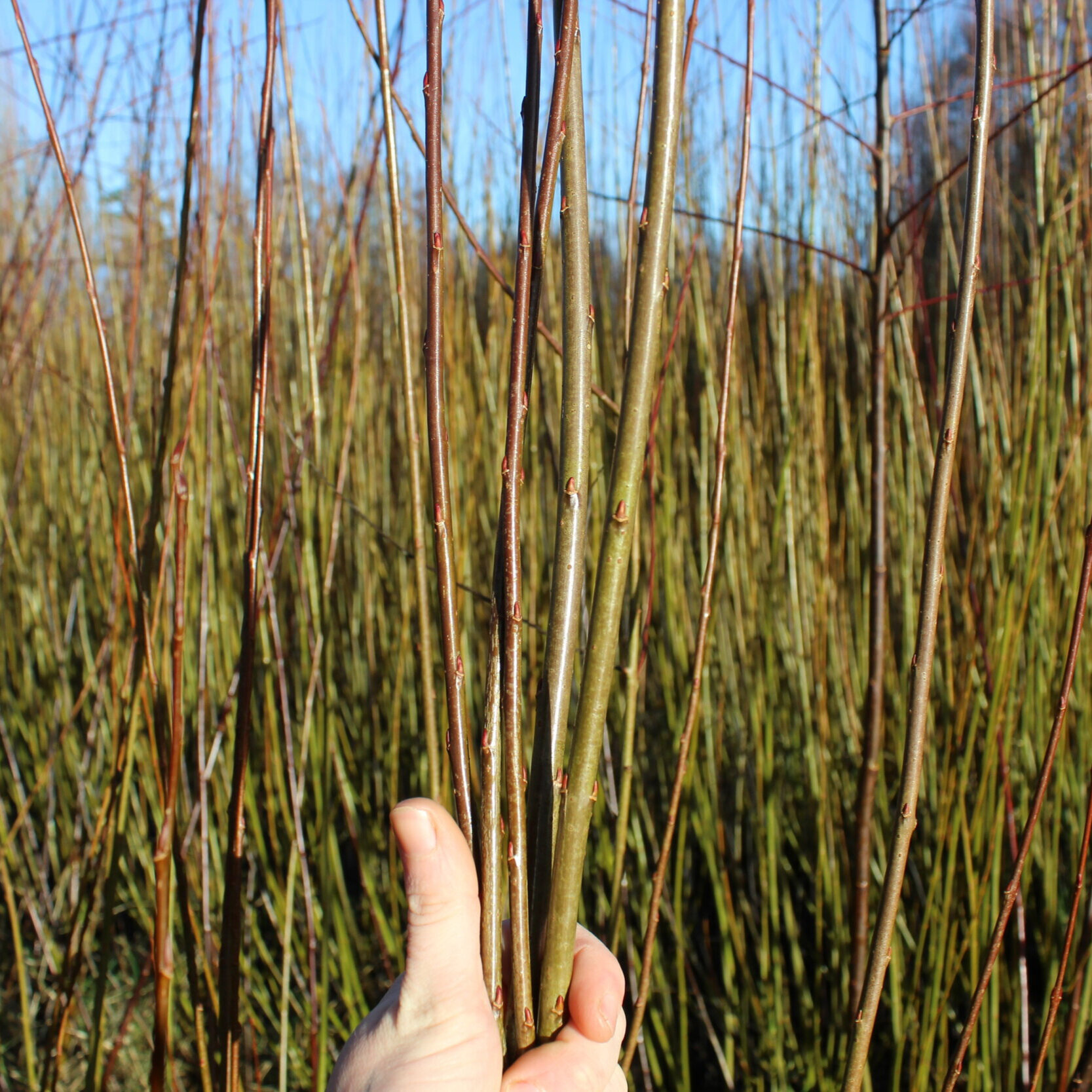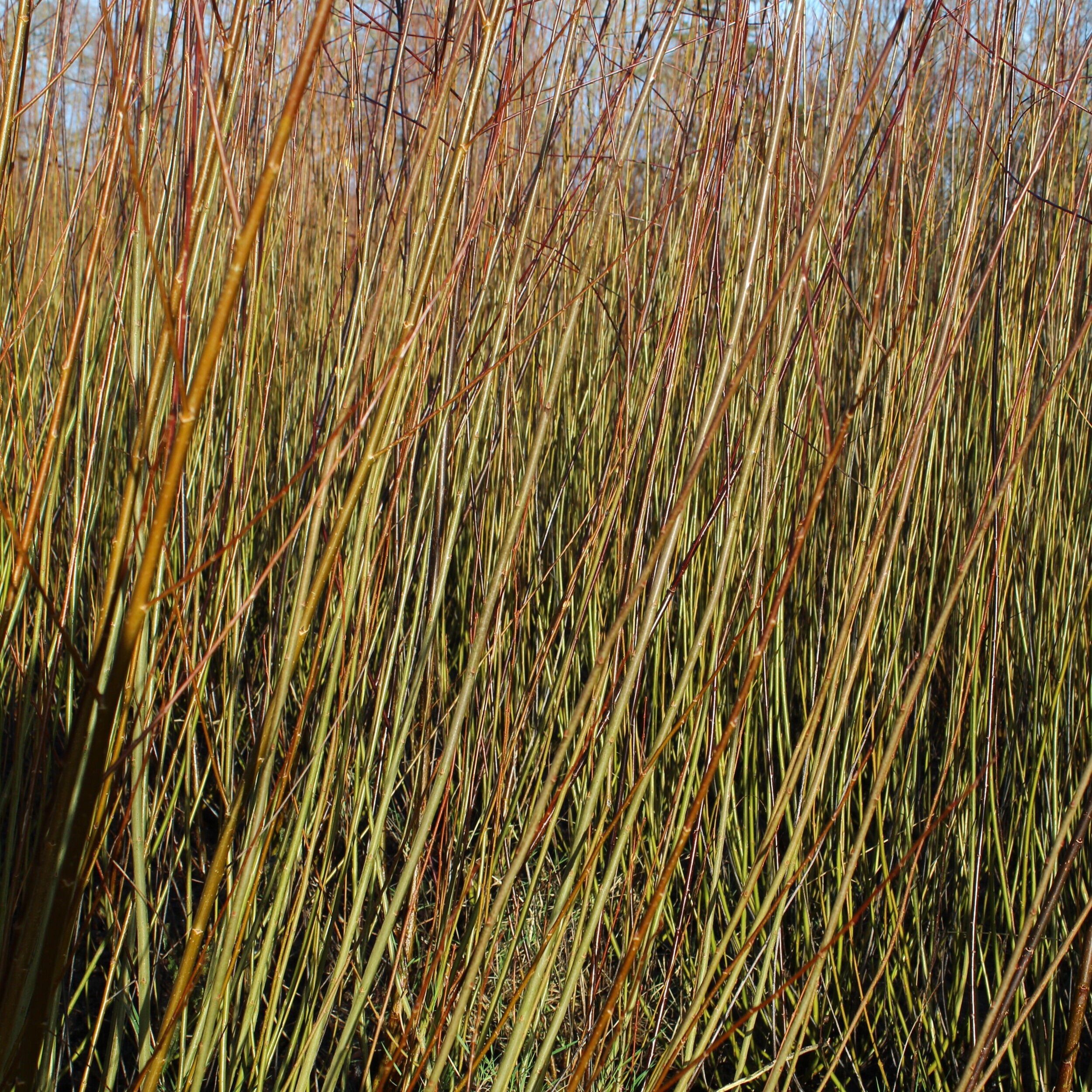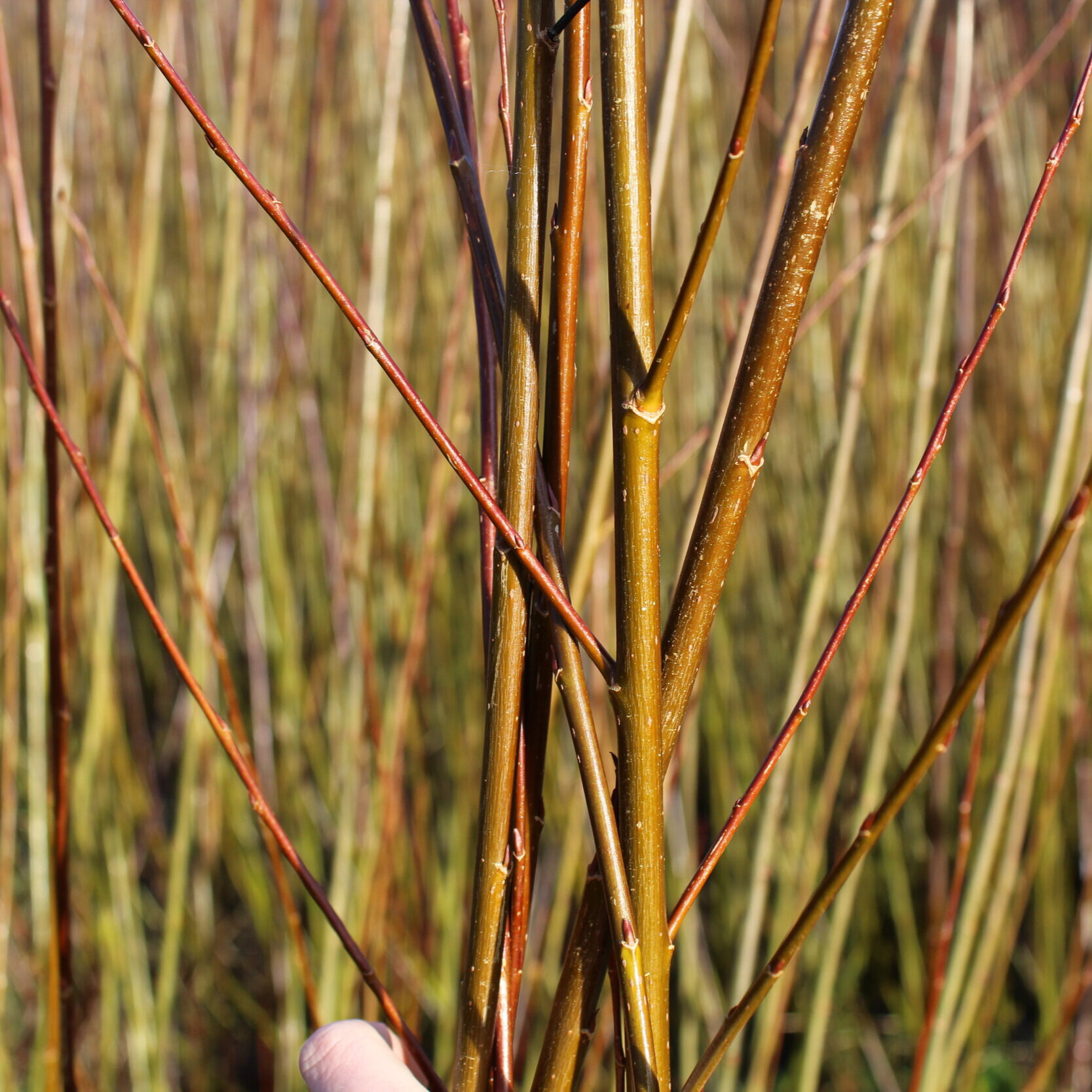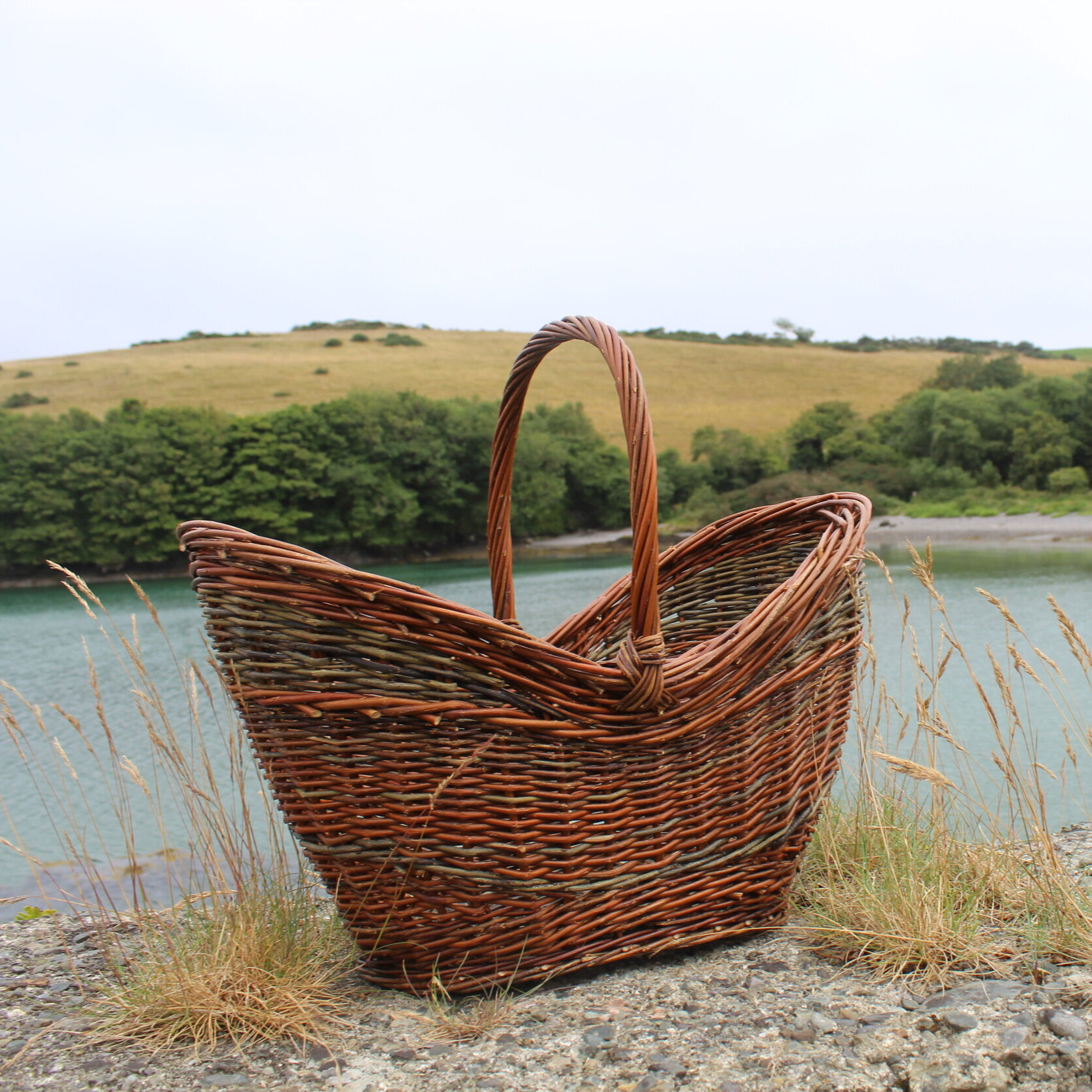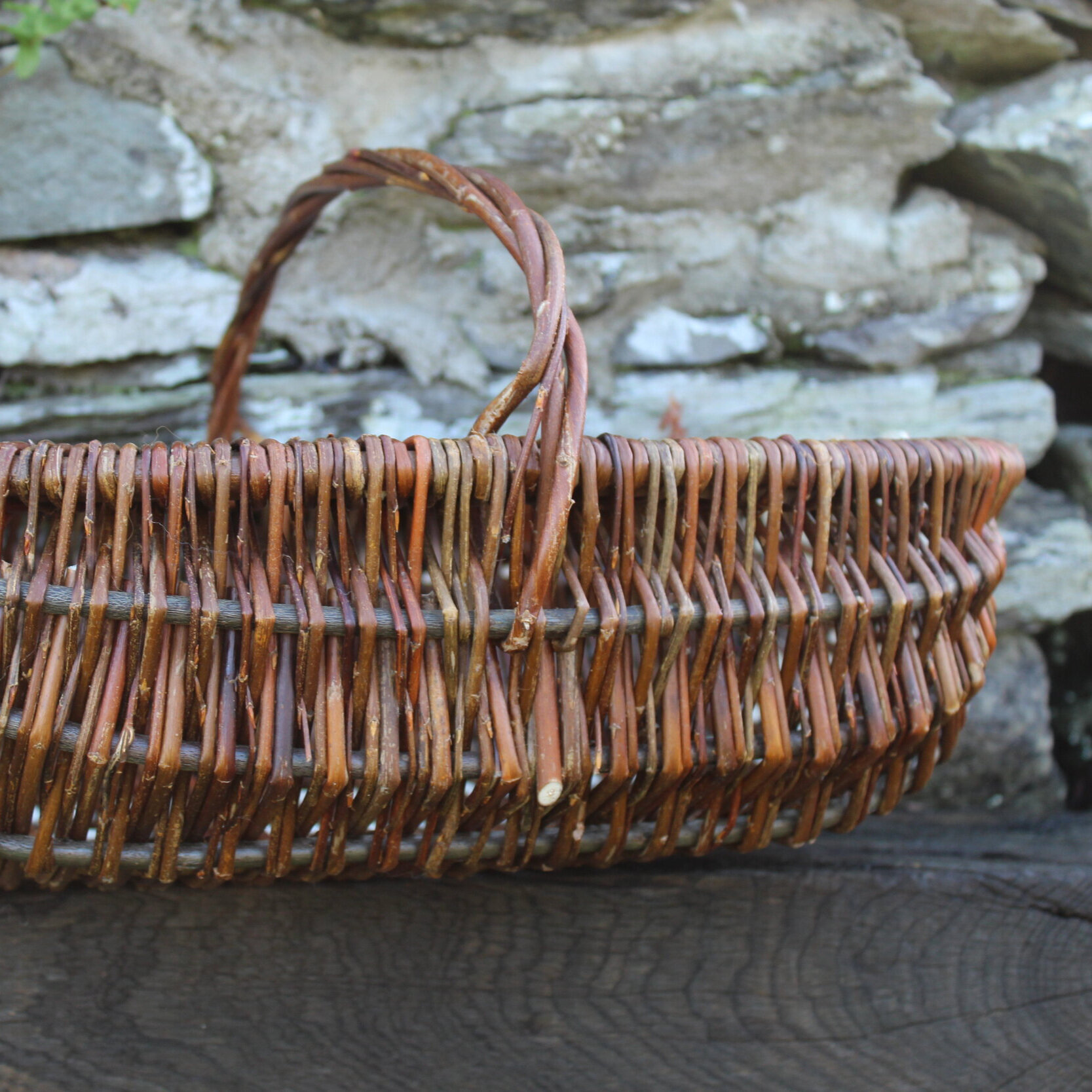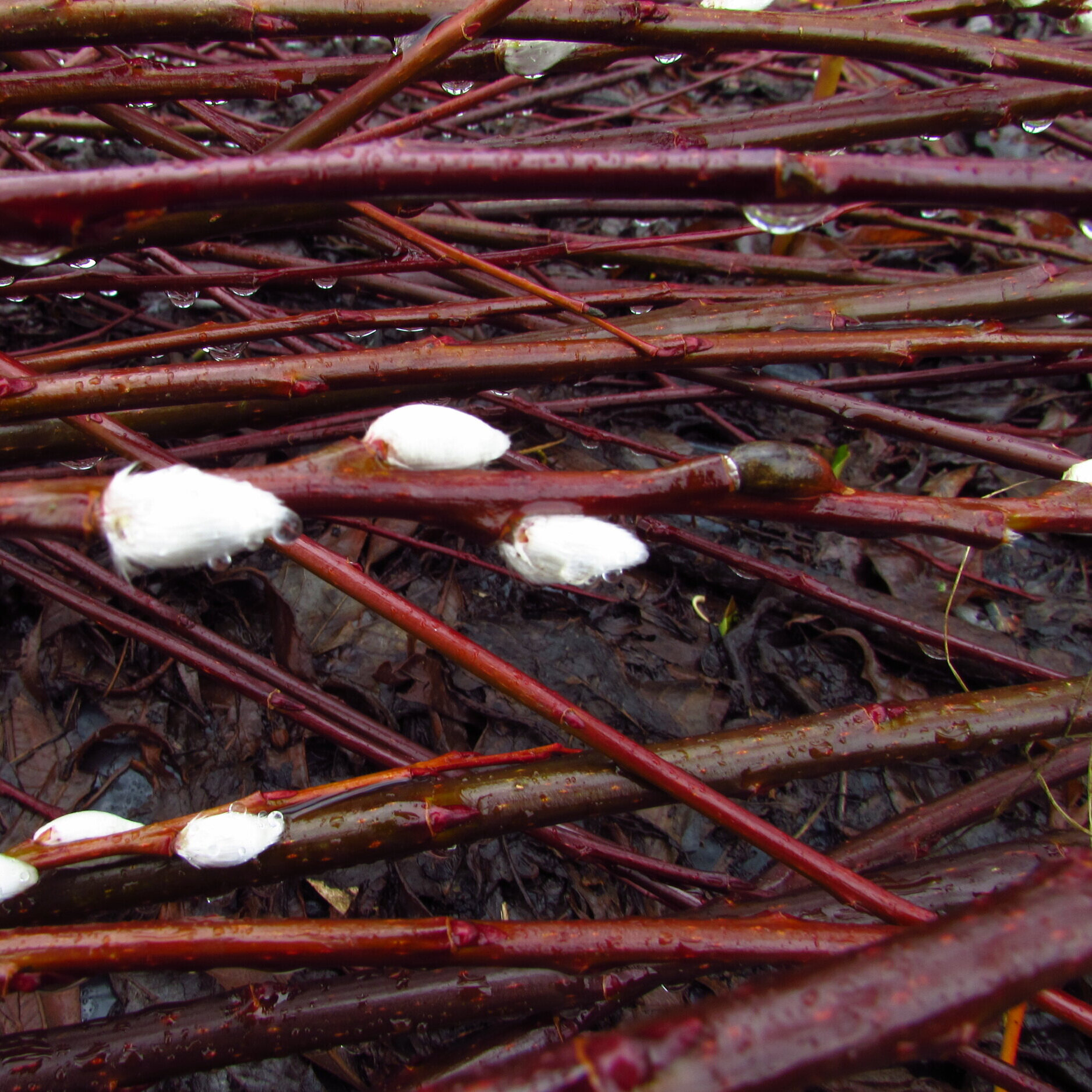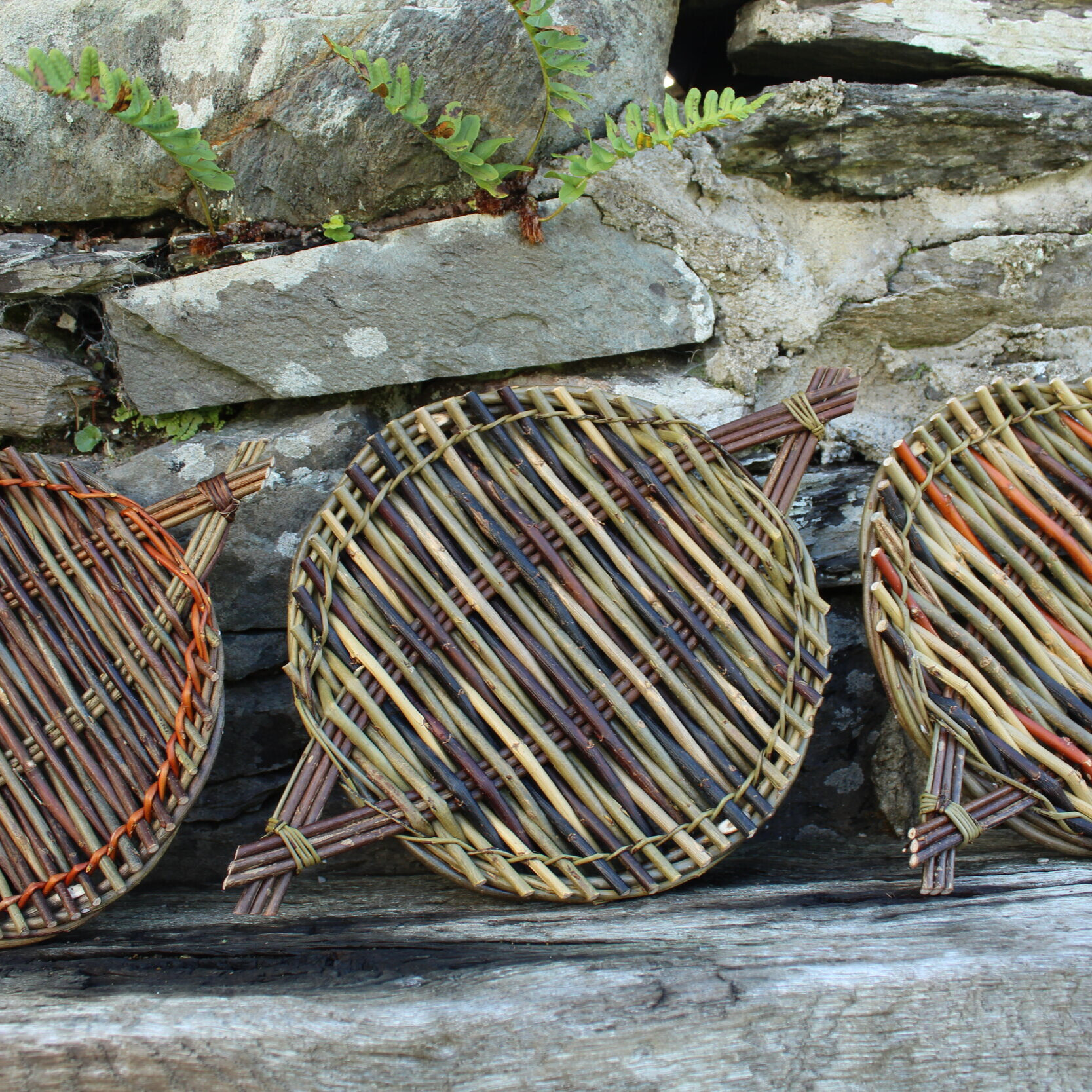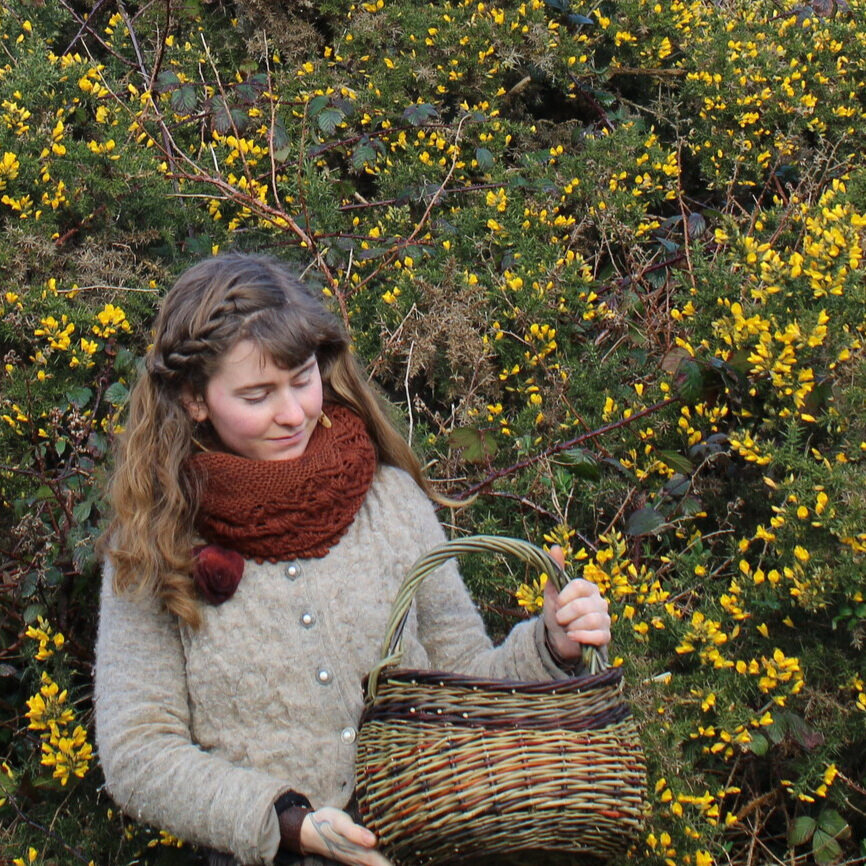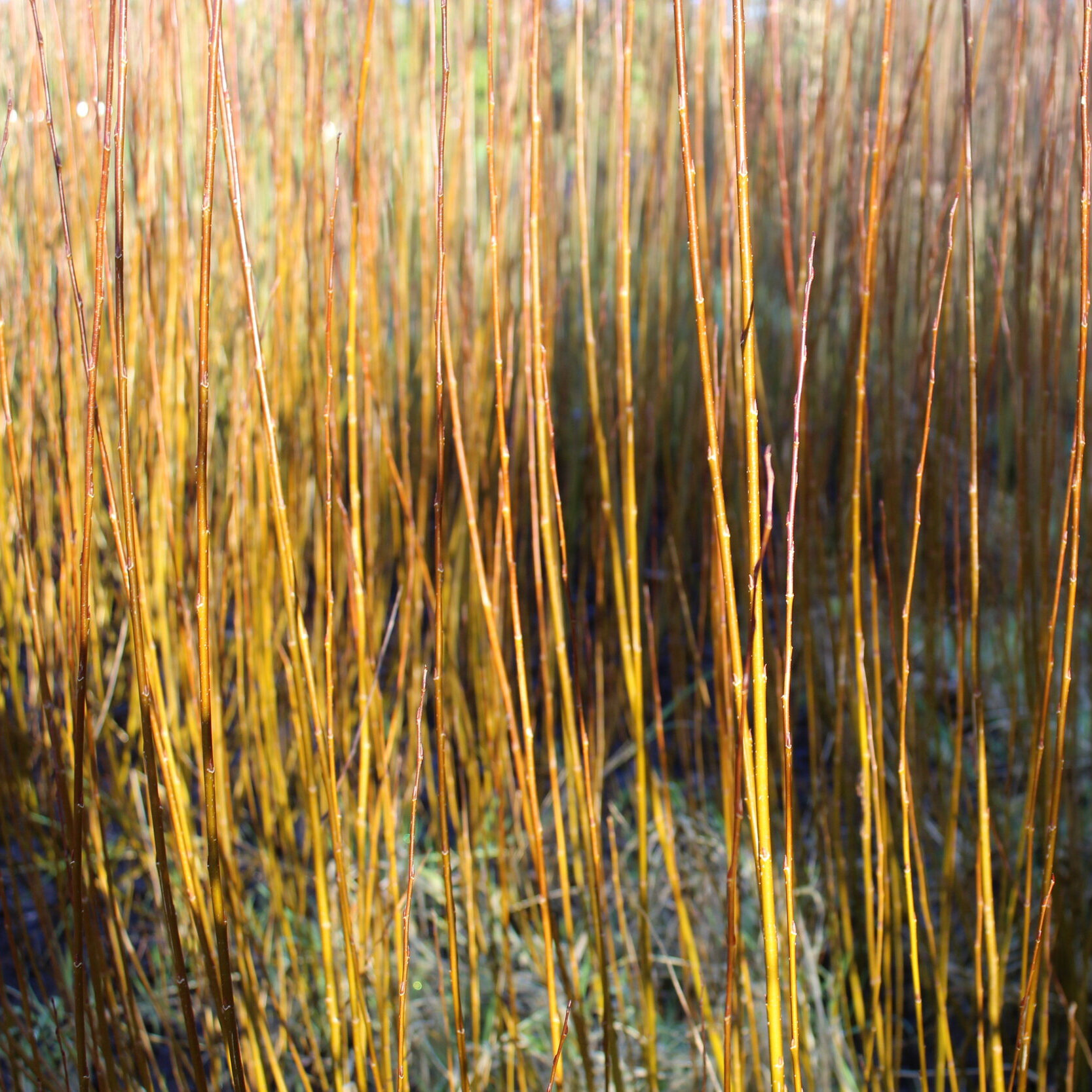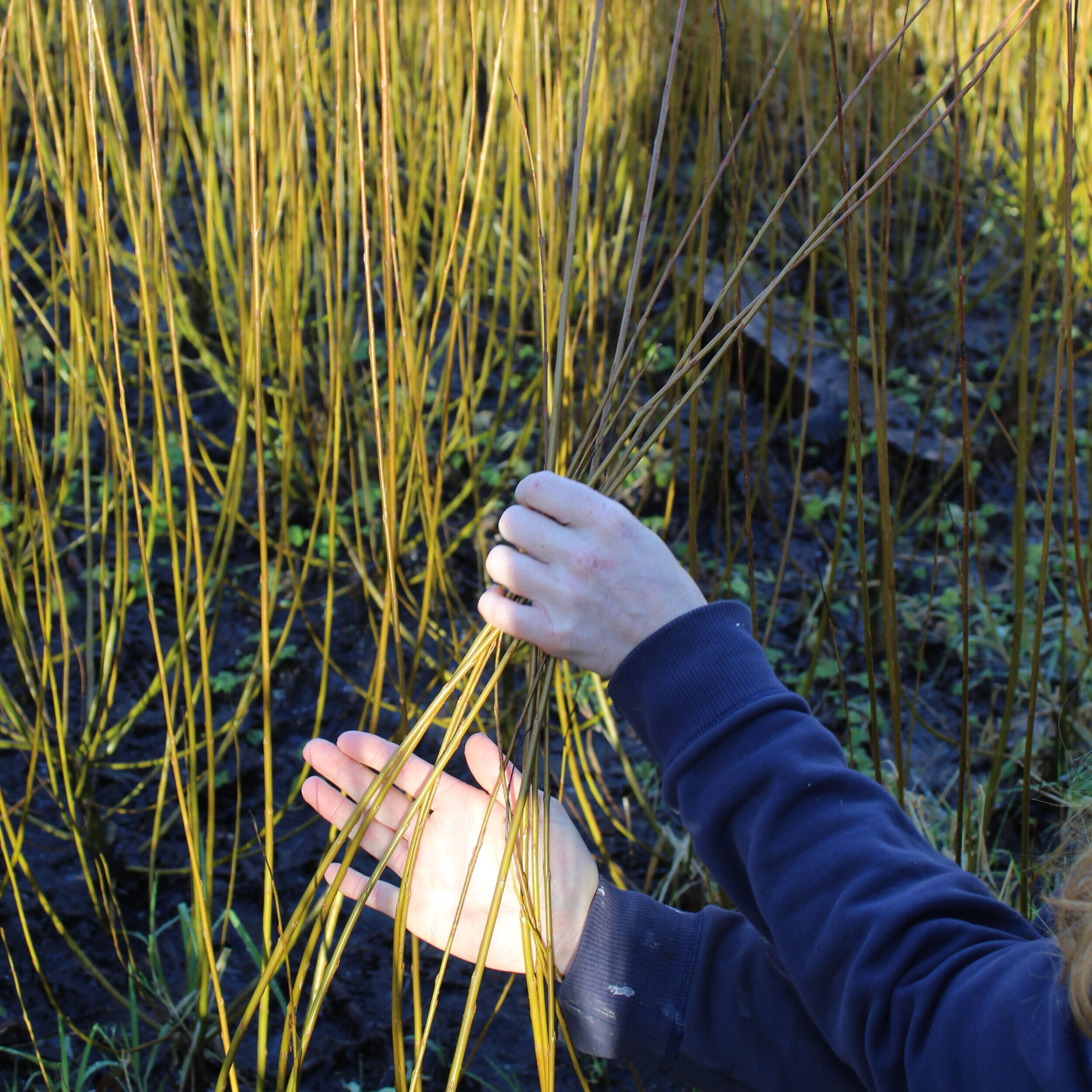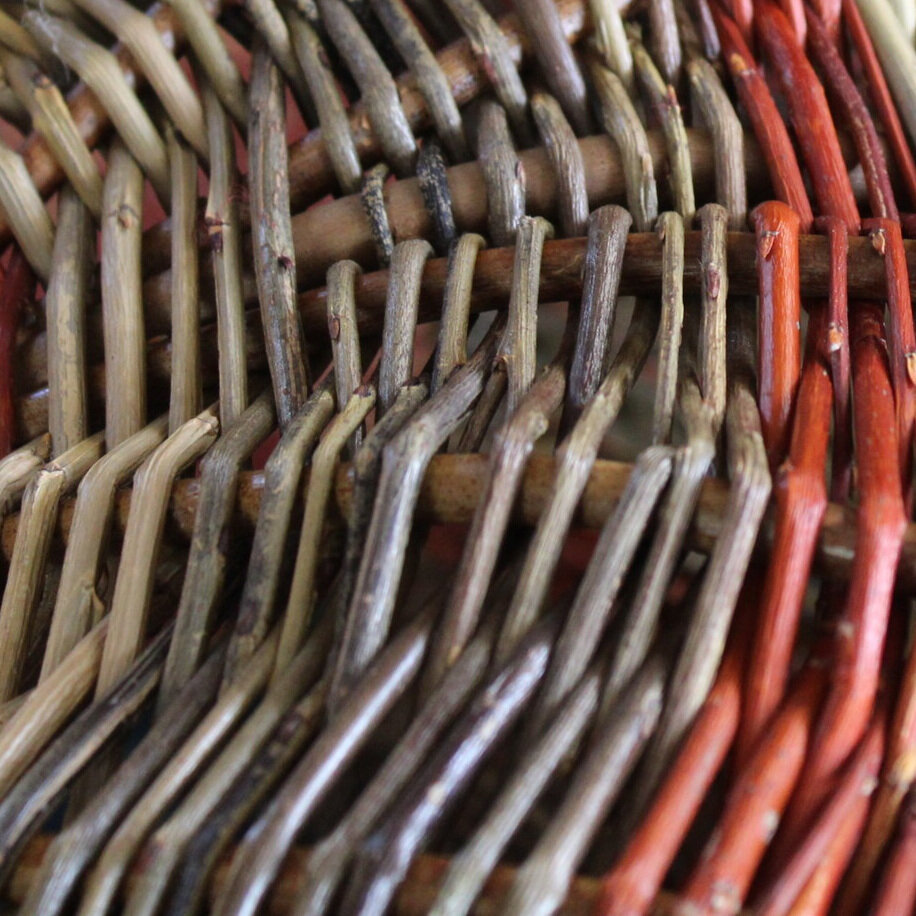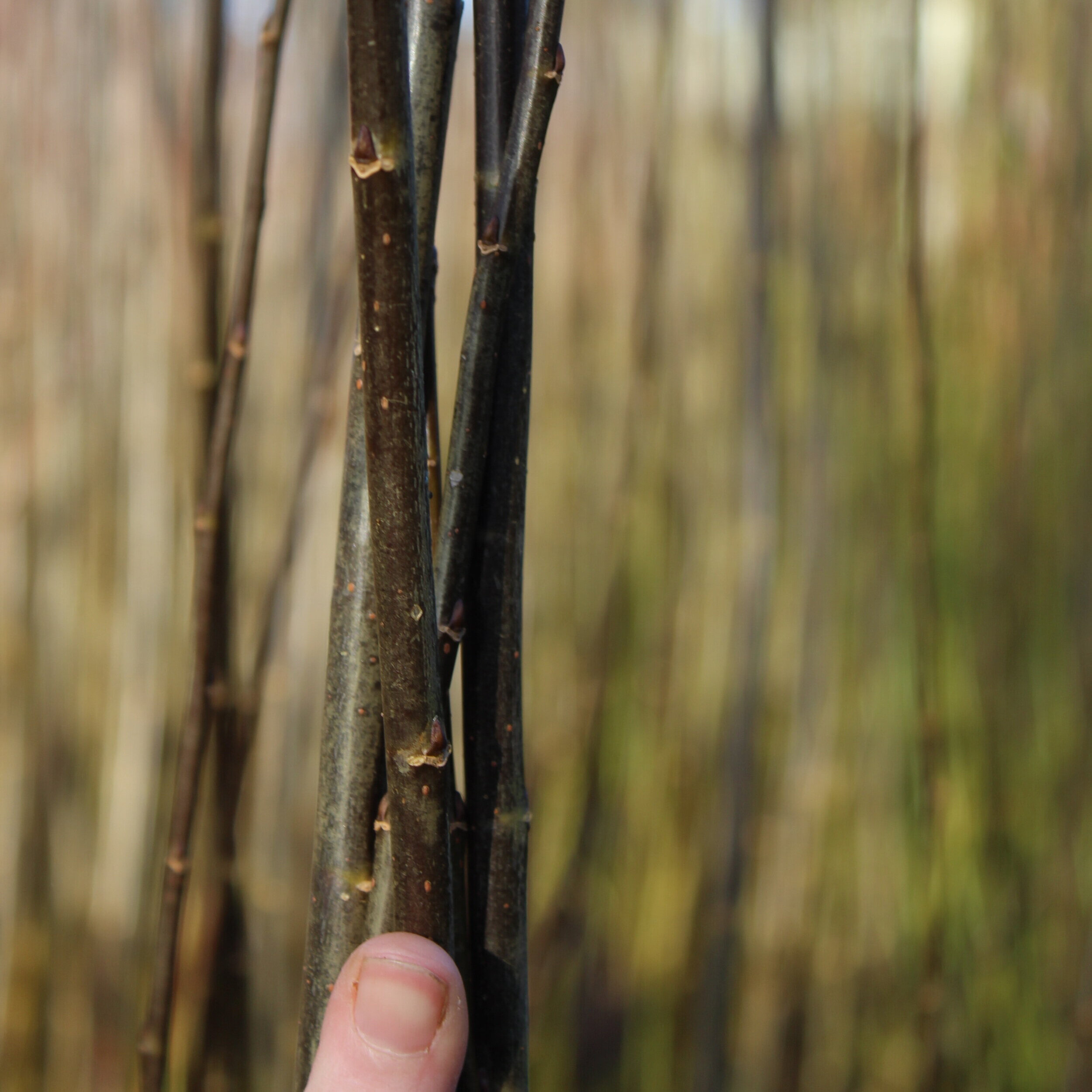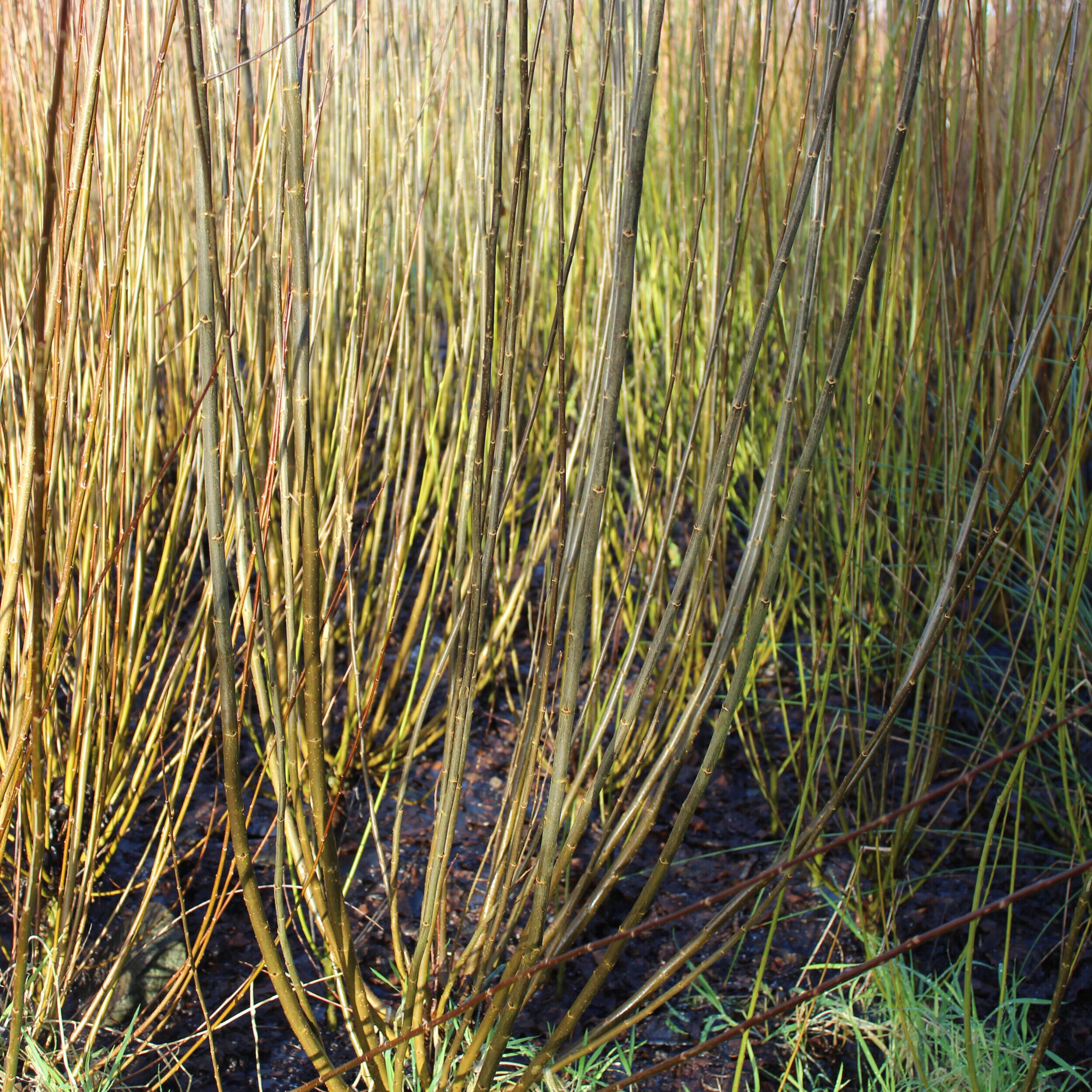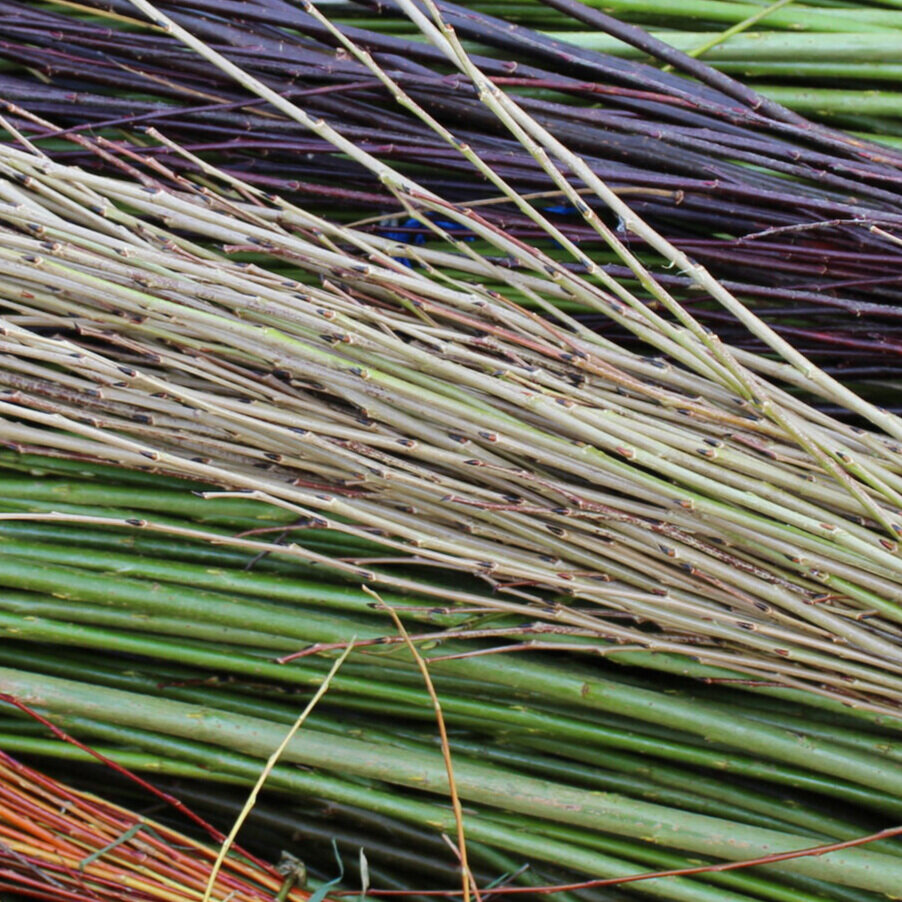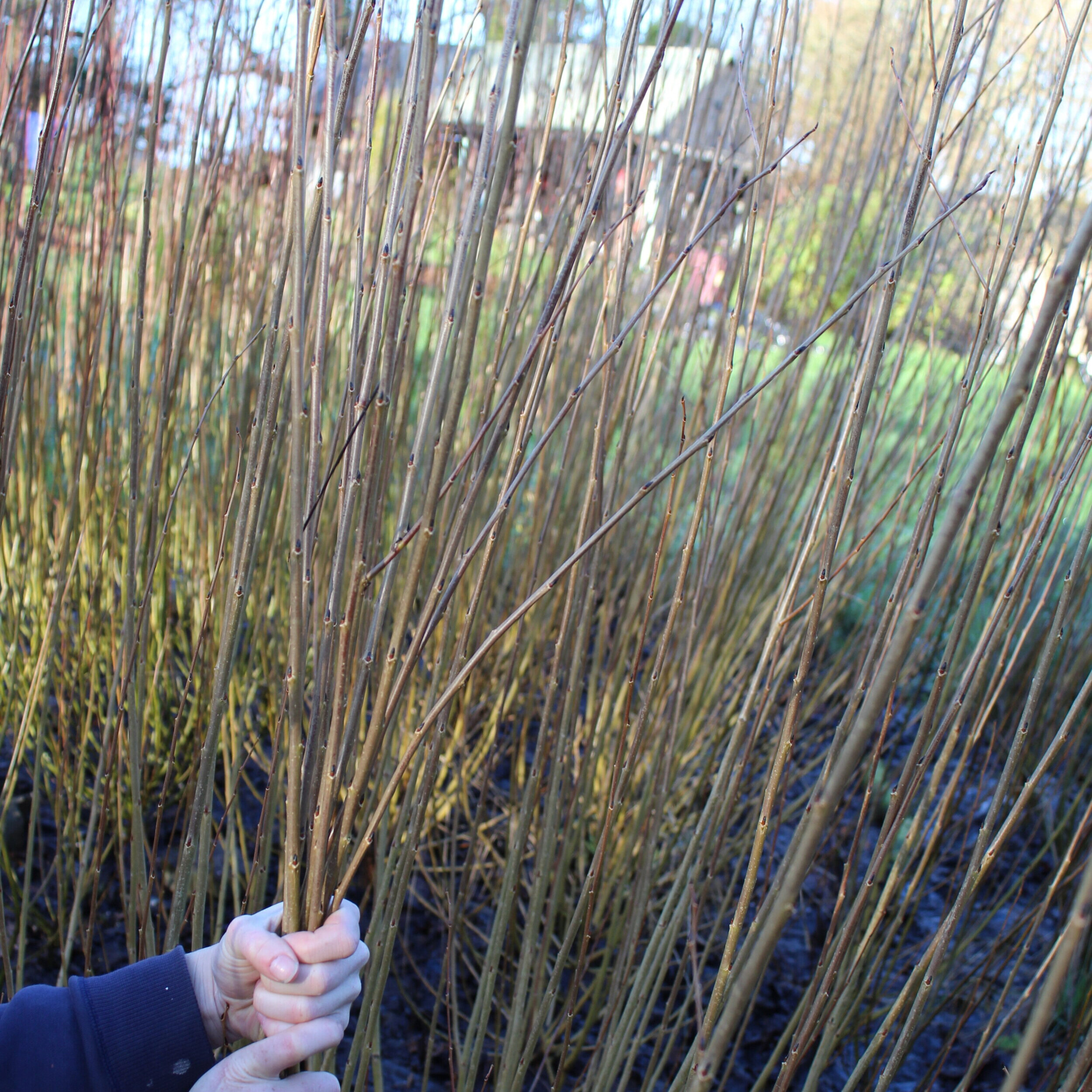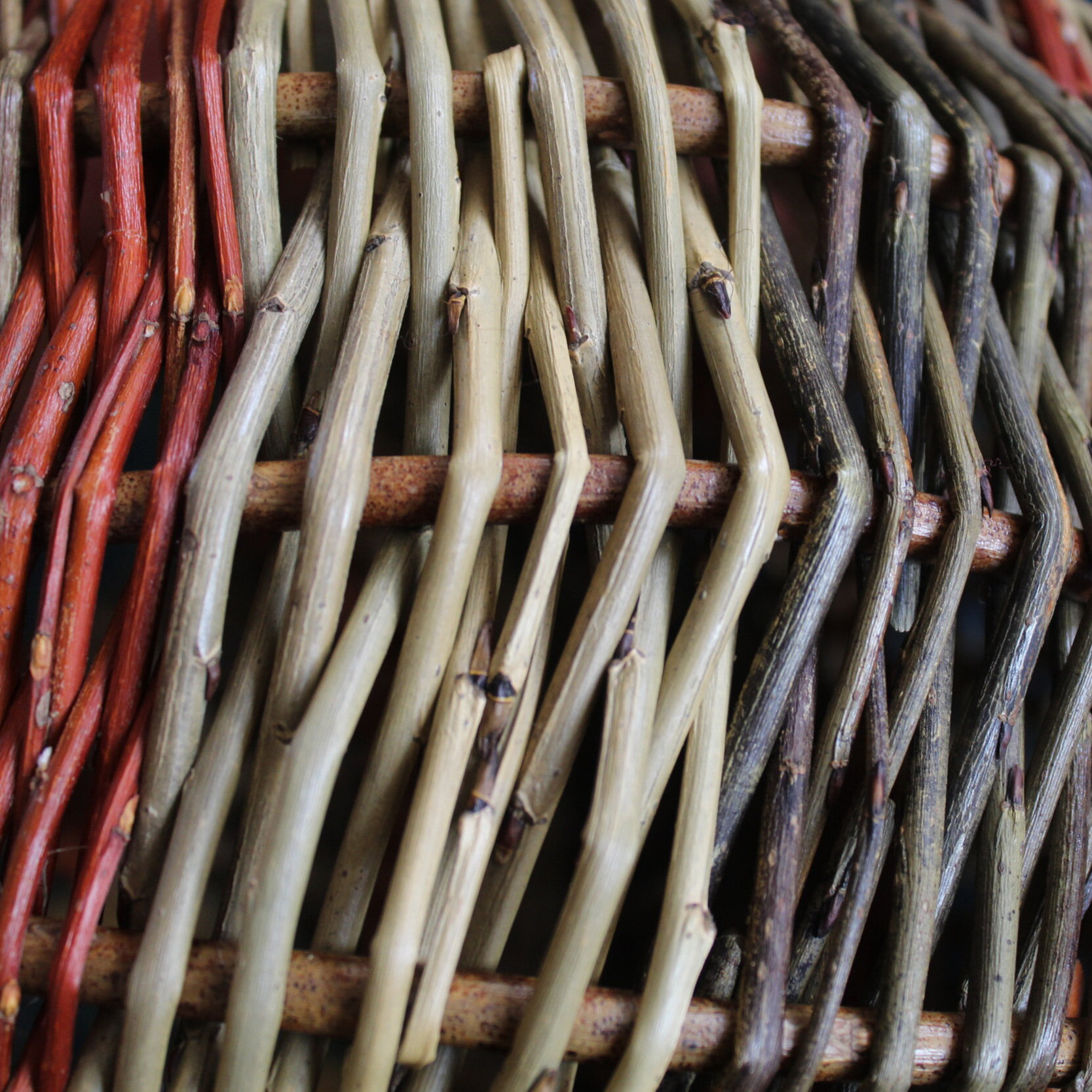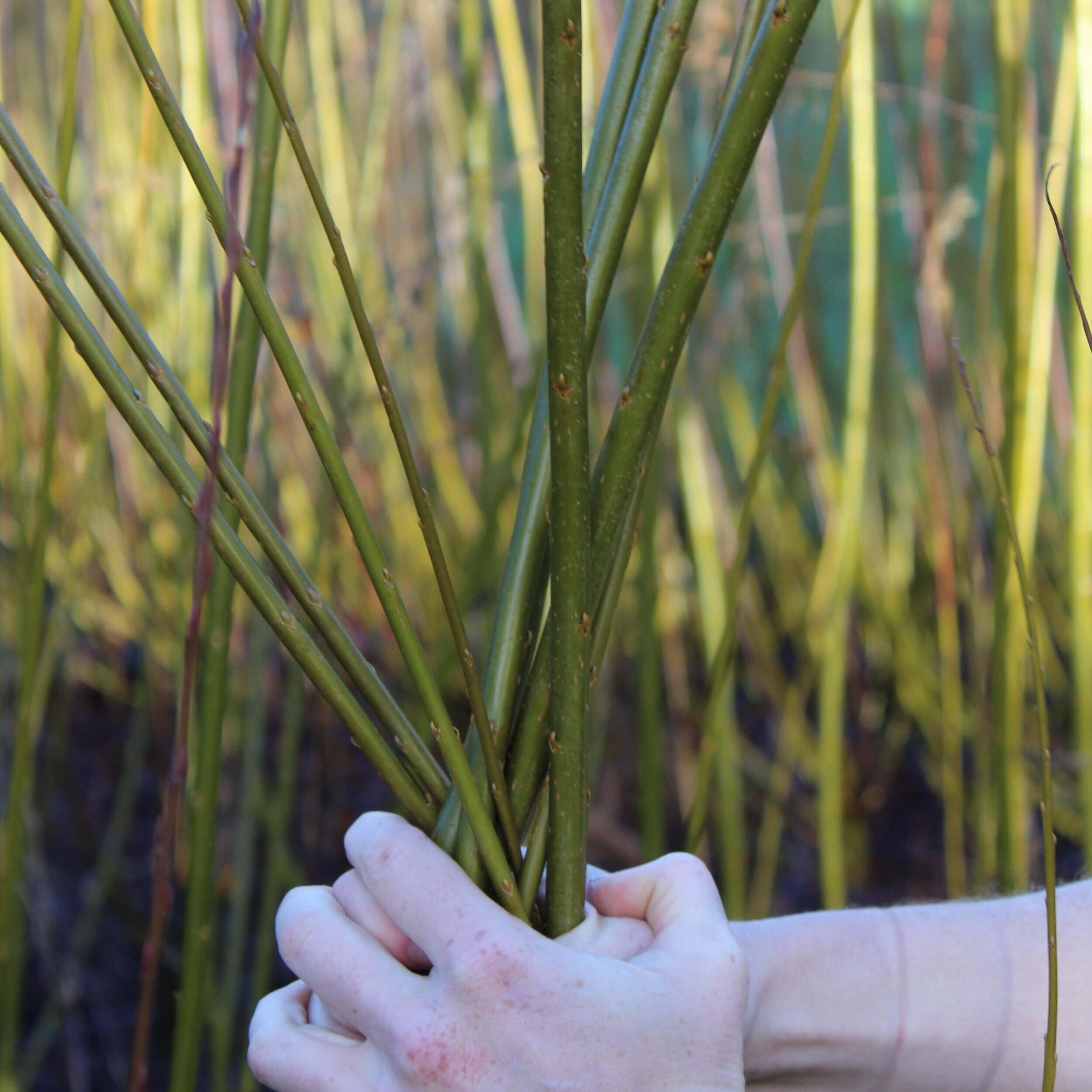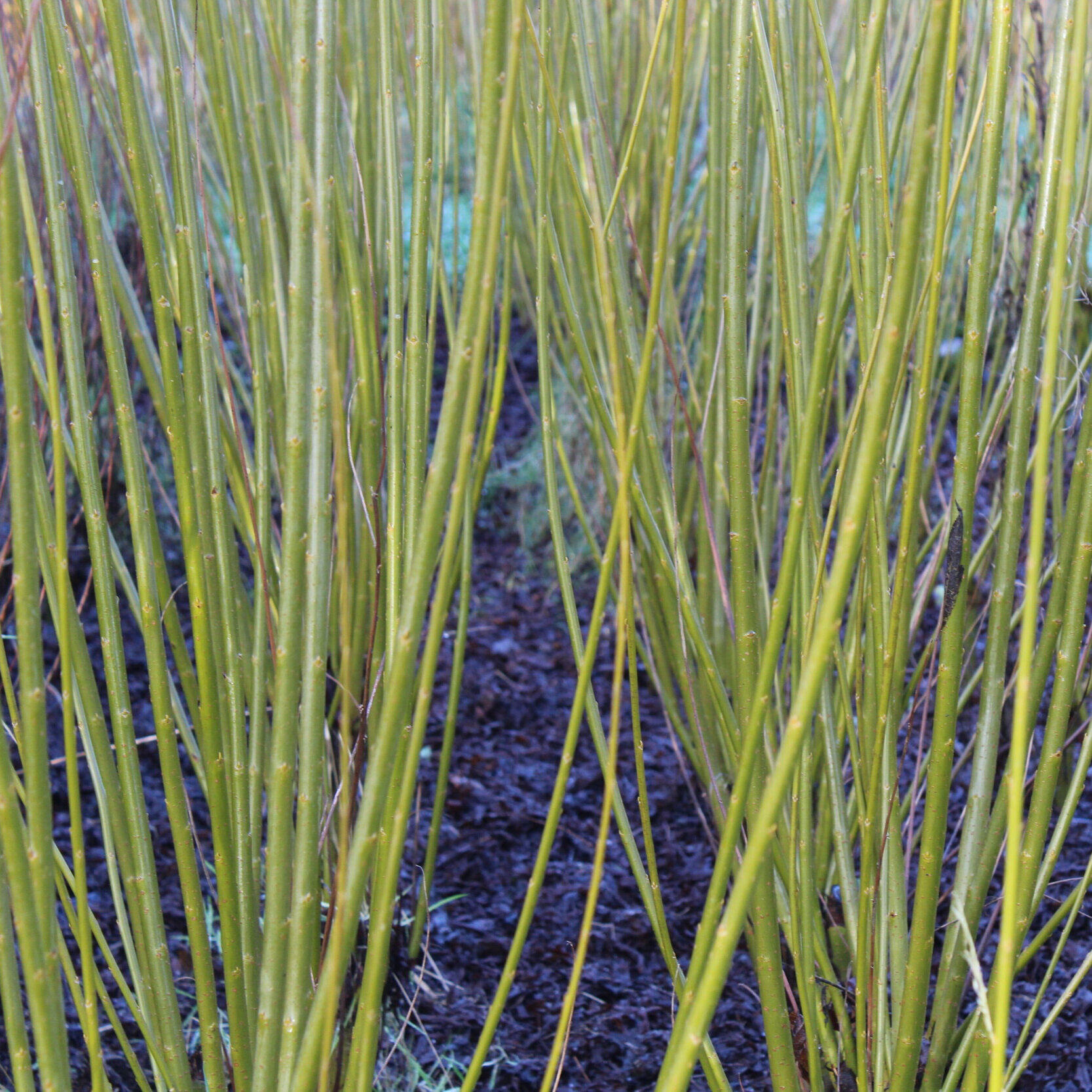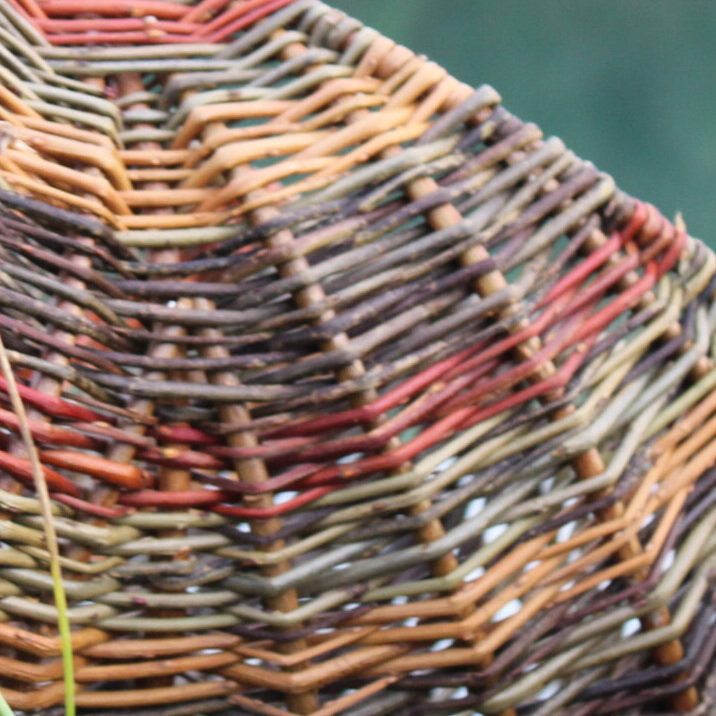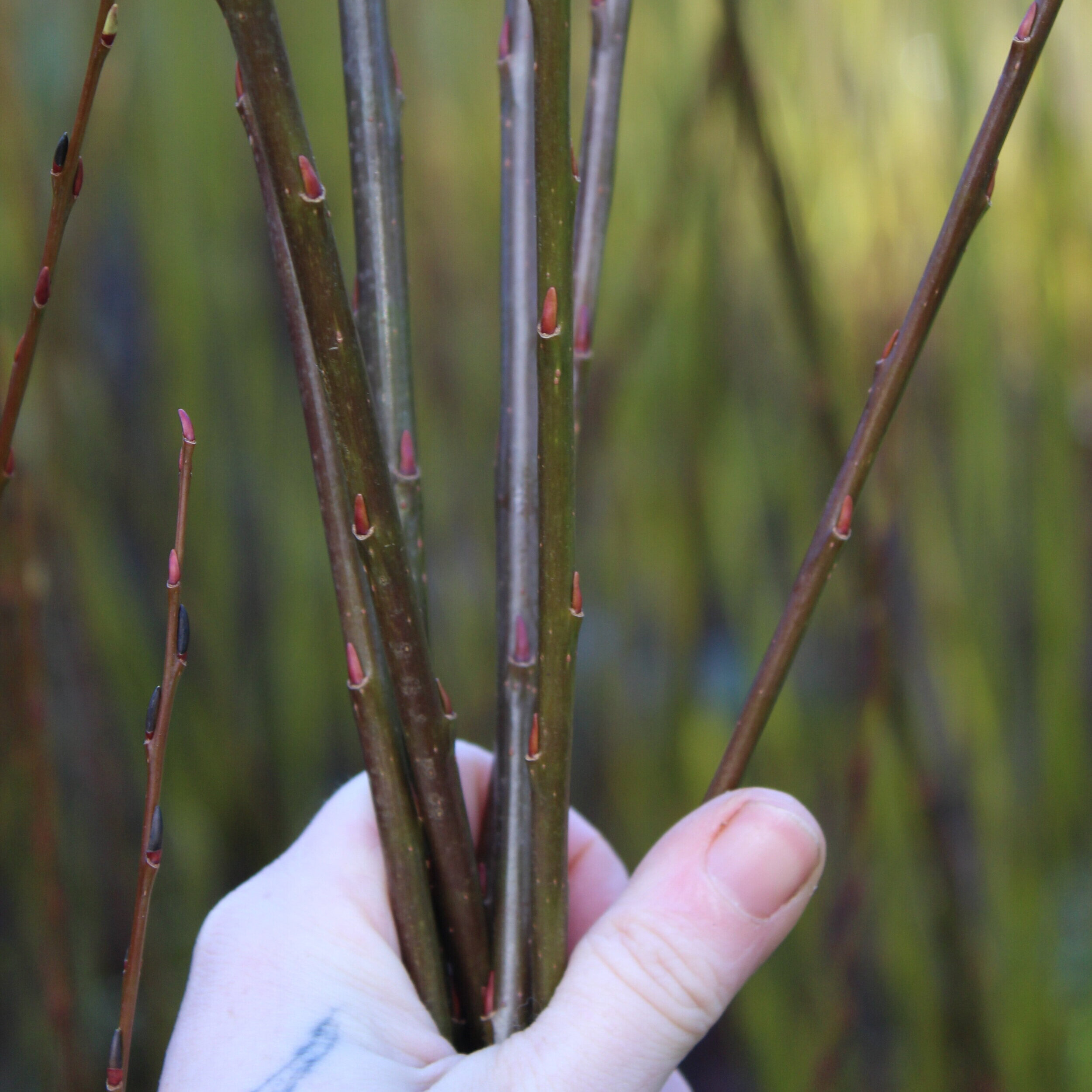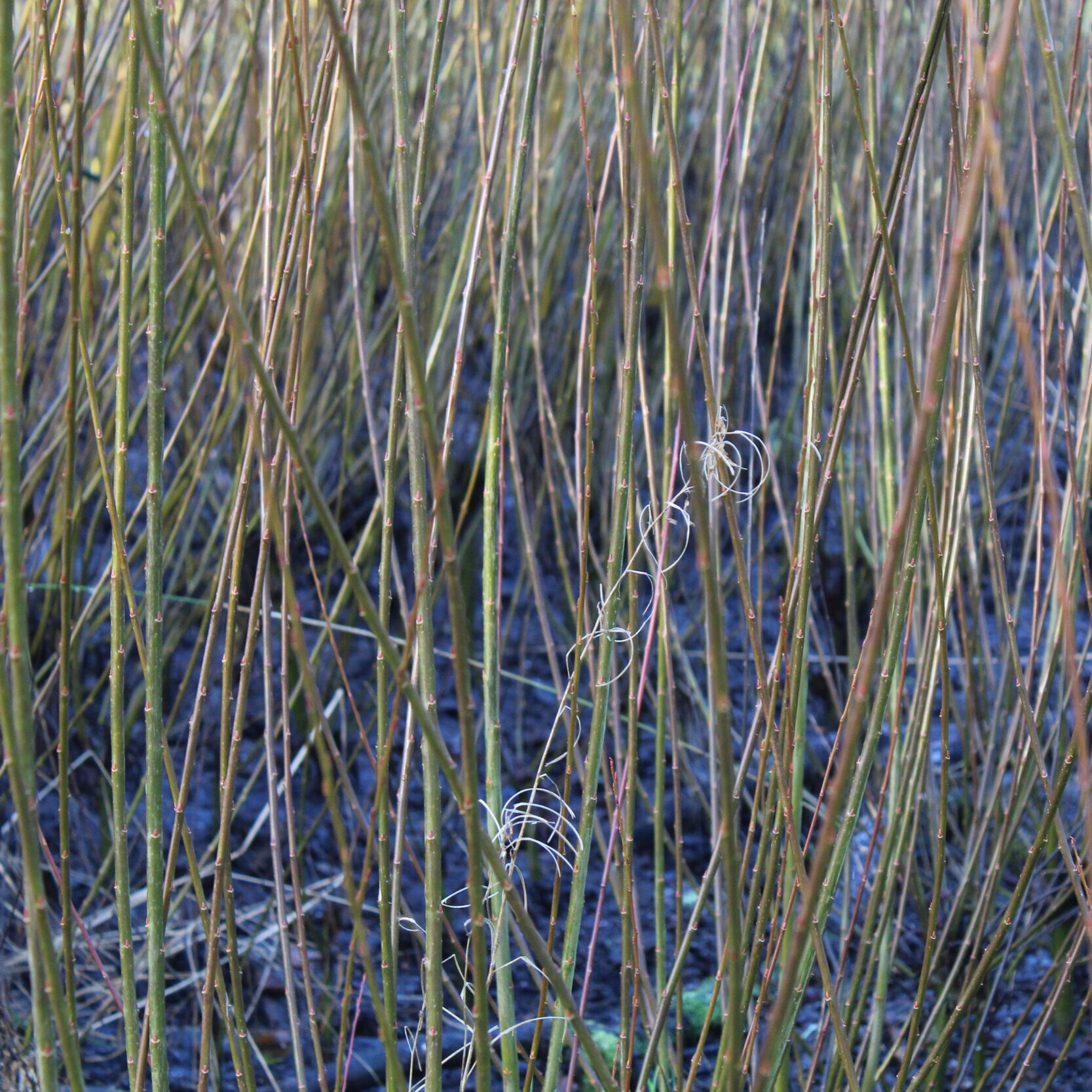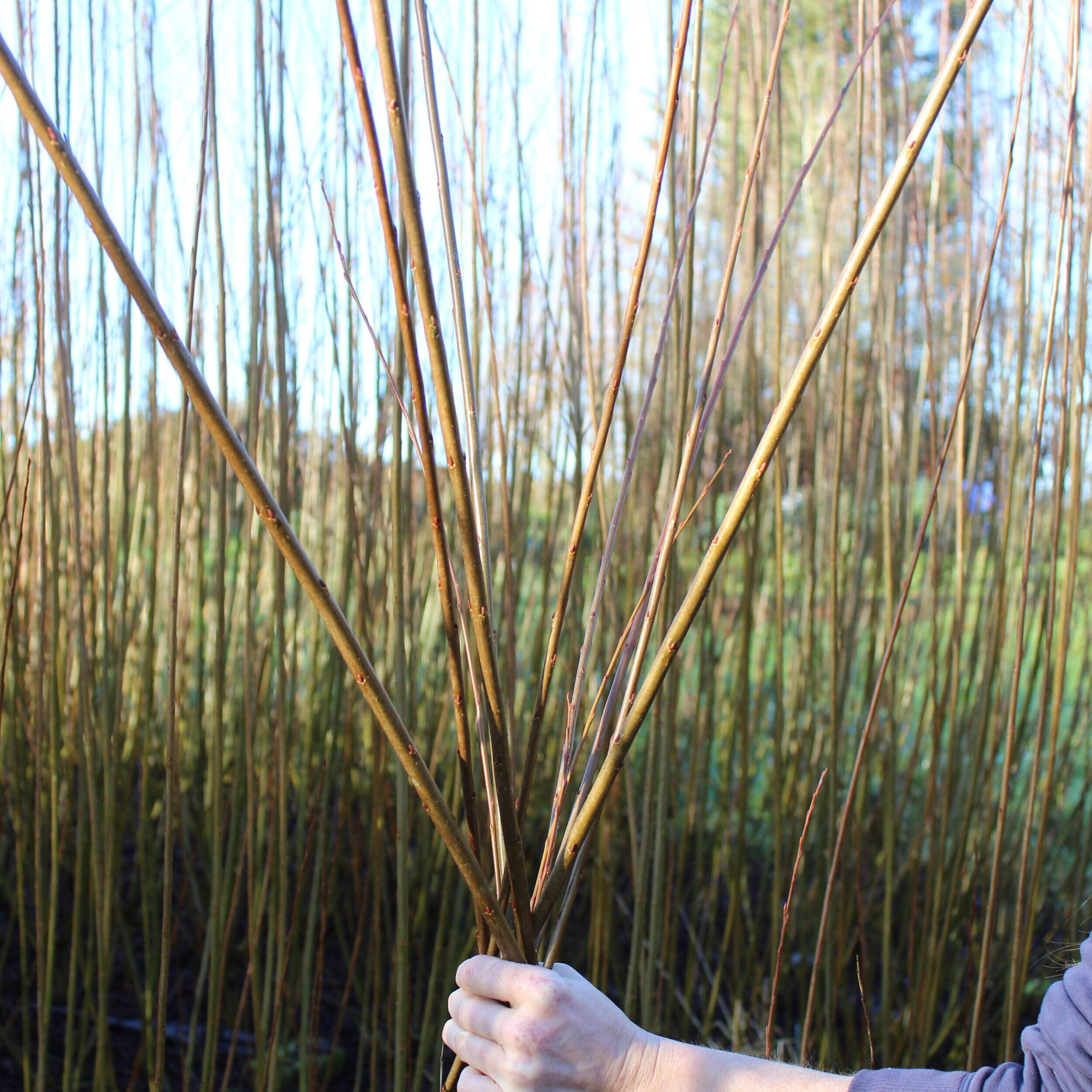Shop Willow Cuttings
to order willow cuttings please click here
Frequently Asked Questions
What kind of land does the willow need to grow in?
The willow will thrive best in a well-draining field, with access to good sunlight (south-facing exposure), a mixed variety of herbs and grasses in the field, and a high water table. Willow will not thrive in boggy or acidic land. If willow is planted in the wrong type of land it is very prone to disease and fungal problems. Willow does best if planted in patches instead of dotted around the land—this encourages the willow to grow straight and not branchy as a coppice.
How many cuttings do I need to plant if I just want to make a couple smalls or small projects a year ?
For a couple small projects during the year, I would recommend a minimum of 75 cuttings, and a mixture of 3 varieties (25 cuttings of each variety). As a professional basketmaker, I have around 2,000 stalks of willow total from 15 different varieties, this provides me with willow for my years worth of commissions and projects.
How do I plant the willow cuttings?
Planting willow is not difficult! With every purchase I include a free digital PDF planting guide and answer any questions along the way. If you would like the planting guide before your purchase that is no problem, just e-mail me at contact@wildrosebasketry and I will send it along :)
What how much maintenance does the willow require every year?
If the coppice is set up properly (in particular with an effective membrane of ‘weed’ suppressant, correct spacing and planted on suitable land) the only tending one will need to do is the winter harvest. This entails cutting/ coppicing all the rods of each willow plant back to the base in the doormat part of the year (when no leaves are present). This is a good amount of work, and ‘work is love made visible’ so enjoy it! If the willow is intended to be used for basketry, wreath making, or anything where one would need straight non-branchy rods, the willow must be cut back every winter. If growing the willow for living structures, sculptures, bark or bird habitat one can let the willow grow for 2-3 years without coppicing.
When do I get my first harvest from the willow?
You will get your first harvest in a years time after planting your cuttings of willow, although it will take three full years for your coppice to reach full productivity. The first years harvest is always a bit branchy—in the years following the willow will straighten out a lot ! You always cut the willow in the doormat time of year, when there is no leaves on the plants (i.e. between mid December and mid-late February)
Chermesima
salix alba variety
strength: soft to work with, easy to soak up, and semi-resistant to kinking
colour: bright orange
size: 4-6 foot (side branches on larger rods suitable for fine weaving)
A bright, beautiful and branchy willow that has a very distinct bright orange colour when growing and when dried. Incredibly flexibly and forgiving, soft willow that brightens up baskets well. Not a high producing willow due to its branchiness, but a little goes a long way and the side branches may be used for fine weavers :) In the last photo you can see the cured willow colour in a basket.
Woody Vimenalis
salix vimenalis varieity
strength: large rods for hoops, stakes and ribs
colour: light brown
size: 6-9 foot
This is my absolute favorite variety for hoops, stakes, and ribs. Beautifully ‘soft’ to work with but ‘woody’ enough to create amazing strength with a resistance to kinking. Ideal for frame baskets. Grows and dries to light brown colour that complements red hues. Steams to a lovely chocolate brown colour.
Flanders Red
salix alba vitellina x fragilis
strength: fantastic for borders, uprights and weavers
colour: rich dark brownish-red
size: 3-7 foot
This is a beautiful all around willow for most everything and is very resistant to disease in the field. This variety produces long and slender rods that grow a yellowy-green but dry a lovely proud red colour. It takes up to twice as long to soak up as most other varieties due to its thick skin, but it is well worth the wait. This willow is also known for lasting an extraordinary long time after soaking and is resistant to mold or rot due to high tannin content in the bark. You can see in the last two photos examples of its cured beautiful red colour in two baskets.
Purple Daphnoides
variety of salix daphnoides
strength: nice bordering plant or hedgerow willow, colour is striking, not high producer for weavers
colour: dark purple
size: mainly 6-8 foot, with many smaller side branches
This willow is a gorgeous colour, that prefers more room when planting compared to other varieties. This willow easily grows around 8-10 feet tall with side branches that are suitable for fine weavers. Prefers well drained ground and access to good light. The last two photos show baskets made with Purple Daphnoides, the first being a willow platter with purple & white; and the second being a photo with a Purple Daphnoides wale & border.
Packing Twine
variety of salix purperea
strength: just absolutely fantastic for everything!
colour: bluey-green
size: 3-6 foot
Hands down my favourite variety—high producing lovely well tapered weavers, growing very well on the land of Éire. This produces slender and tall rods that are a joy to work wit, resistant to kinking, strong and ‘woody’, and yet so flexible! Dries to lovely dark greeny-blue that complements most other colours.
Black Maul
variety of salix triandra
strength: strong, flexible, favorite among continental weavers
colour: silvery-grey
size: 6-9 foot
This is a favorite willow among many continental weavers, for its strength, flexibility and ‘woodiness’. Makes long lasting and strong baskets. Most rods from this variety are large, making it ideal for stakes, uprights for log baskets, hoops, and building blocks for frame baskets.
Welsh White
Salix Fragilis Decipiens
strength: amazingly flexible if soaked properly, striking white colour for contrast, suitable for uprights for small baskets and weavers
colour: cream white
size: 3-5 foot
A striking variety for colour. Can provide beautiful contrast to darker colours (packing twine, brittany blue) and bright colours (chermisima). Requires a good bit more soaking time than most varieties. Very resistant to rot and disease. The rods have a sharp taper, meaning that they are quite ‘chucky’ for the height compared to most basketry varieties. Great for rope handles and tying bundles in the field.
Continental
variety of salix continental
strength: soft to work with, large great straight rods perfect for split stakes, hoops, fencing, etc
colour: dries to bright yellow
size: mainly 8-14 feet, with a handful of small fine weavers that are ideal for frame baskets giving a gorgeous bright yellow colour
The larger rods from this variety (9-14 foot) are ideal for hoops, rips, split ribs, and plant supports. The smaller rods (weaver size) making a striking edition to baskets due to their bright yellow colour—this can be seen in the last photo of the cured bright yellow willow in a frame basket. Most of the rods from this willow are 8 foot +. This willow is soft of the hands, but also is known for kinking easily due to this nature—not ideal for uprights. This willow splits beautifully fresh, I use it for my traditional trugs throughout the year.
Brittany Blue
a variety of purperea
strength: resistant to disease; nice even taper; produces fine weavers & uprights —one of my favourite varieties!
colour: dries to be a beautiful sea blue
size: mainly 4-6 foots, some 3 foots
This is a must have variety for anyone serious about making baskets, wreaths or other fine willow work that cherishes a reliable rod that has a nice even taper. This willow needs a bit a little bit soaking time than most varieties to become supple & mellowing is a MUST for this variety. It is is over-soaked this variety can be quite kinky making it not ideal for borders. One of my favourite colours and rods to work with :)
Harrisons
strength: uprights, creels, log baskets, garden structures, nice ‘woody’ yet soft rod
colour: dark bluey-brown, steams to chocolate brown
size: 5-8 foot
This variety is a favourite of my teacher Joe Hogan. He loves it for making traditional creels, log baskets, and so on. It is quite resistent to rot after soaking, and so one can steam the rods many times to ‘perk it up’ if it gets a bit dry. Steams a gorgeous chocolate brown colour. Lovely for rope handles (bark doesn’t peel much)


